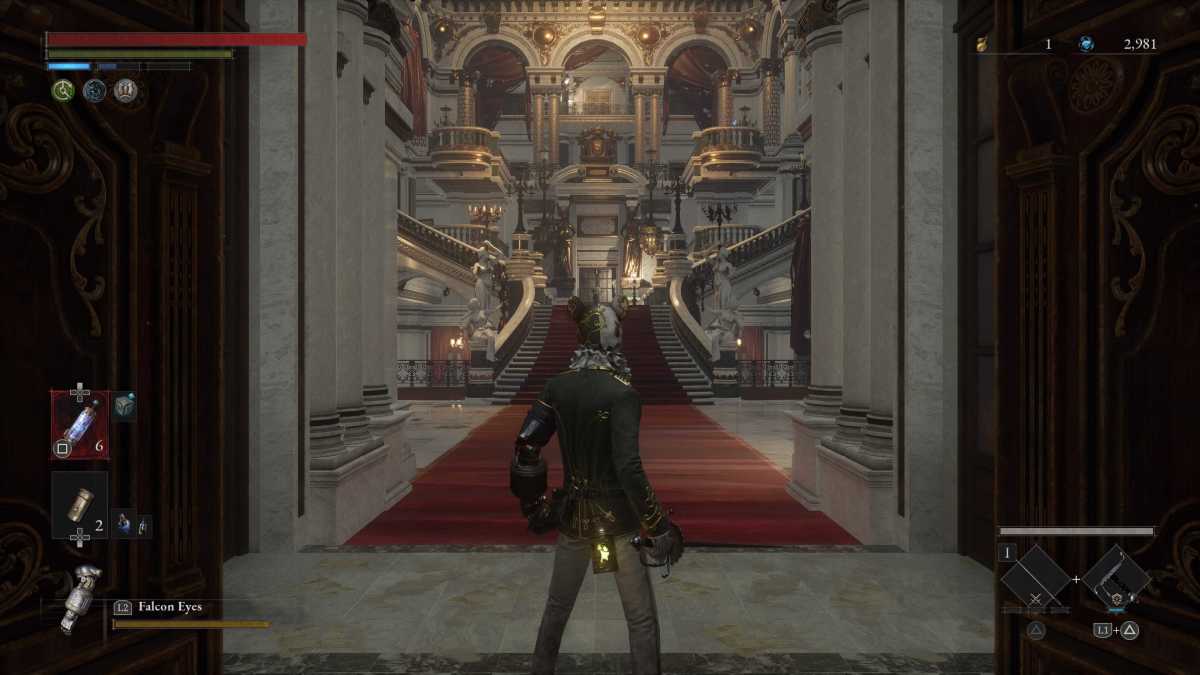Lies of P review: A beginner’s guide to soulslikes

The only soulslike game I had completed before beginning Lies of P was Salt and Sanctuary, and despite adoring that game, I was more than aware that I loved it because it’s in 2D. I have no issues with difficult games, I’ve completed plenty of games considered by many to be challenging, but the vast majority of these are from my wheelhouse. It took me around 4 hours of playing Dark Souls to decide it wasn’t for me, and since then, I have avoided soulslikes whenever possible. However, Lies of P intrigued me towards the genre for the first time ever. Mixing ‘choices matter’ with the challenging yet rewarding boss fights, I felt this was on to a winner.
When you boot up Lies of P, you will find that it does stick pretty closely to the classic soulslike formula in many respects. You’ll recognize the UI, the control scheme, and the overall art style that is very reminiscent of Bloodborne. However, there is a lot more here than ‘just another Bloodborne clone’. Firstly, the controls are completely remappable, and while you still can’t pause, or save scum, or look at the map, this one change makes a huge difference to approachability. I spoke to director Ji-Won Choi at Gamescom this year, and the main thing he wanted to relay to me was how Lies of P wouldn’t be like the other soulslikes; it has been altered thanks to player feedback to be approachable for new players.

The first few areas are pretty linear, with a few secrets hidden around here and there. Later the areas open up with more secrets to find, but you can still take the critical path and avoid optional bosses if you like. You won’t find yourself wandering into an area that is too difficult for you in the early part; it tries to keep the difficulty manageable. That’s not to say anything is easy – you’ll still find yourself dying plenty – but you will often enter each boss area with the feeling that it is possible, once you figure out the right pattern and build.
Building your character is complicated, but again this is introduced to you in stages. First, you will be given a weapon which you can use to guard, parry, attack, and charge attack with. Then you are introduced to your Legion, a metal arm with a very strong punch, and basics like lock-on and dodging. After the starting area, things open up. You can interchange weapons, adding handles to different blades, and there are upgrades for both. You can change your Legion for a grapple or a flamethrower, a grenade launcher, or a shield, among other things. Later, you will be given a wishing cube, which can be popped for a number of different buffs. Then there is the skill tree, where you can gain extra heals, better dodges, or more attacks. All of the different combat options are introduced slowly and layered up, meaning you never feel overwhelmed.

There are three main elements, and three main enemy types. Enemies with black blood are weak to electricity, enemies with blue blood are weak to fire, and enemies with red blood are weak to acid. Wordless hints are given to lead you to this conclusion and will make working your way through areas even easier. There is, of course, the importance of resource management, and you won’t be able to make all three builds straight away, but over time, you will get a better idea of what works. The differences in damage using weaknesses is staggering – which reminds me there is also a very satisfying stagger system.
While most play soulslikes for the combat, Lies of P offers something more – it gives you a changing story. Based on the story of Pinocchio, you will recognize various homages and characters that link to the classic tale, and just like Pinocchio, the story changes based on the lies you tell. The world is littered with secrets, and you are often trapped between the right thing to do and the kind thing to do. Pinocchio – or Lies of P’s gorgeous variation of him – straddles the world between puppet and real boy, and you have to guide him.

The story overall is much deeper than I was expecting. You’ll find notes, posters, and newspaper clippings throughout, and reading them will guide you to the right path when it comes to side stories. There are various people that you can find throughout, and they will often request things from you. Doing so not only offers more rewards, but adds to your humanity, or lack of as the case is. And you’ll feel for the people of Krat the more of them you meet. There are the puppets who are fighting a frenzy that has turned them against people, the remaining people who are fighting a petrification disease, and the people who tried in vain to find a cure. It’s interesting how you not only care for the NPCs you meet throughout the world, but the enemies too.
Despite its similarities to so many other soulslike games, it does enough to be different. For hardcore soulslike players, there is the promise of a new story, and alternate endings among the difficult boss fights. For newcomers, Lies of P does a good job of easing you into the action. It hasn’t made me more interested in soulslike as a genre, despite me obsessing over it for the last few weeks, which I guess goes to show just how different it is. Despite how dark and rainy it may seem, there is a genuine goofiness to it that is rare to find, and the promise of a unique story for each playthrough will see it stand out.

Score: 8/10
- Visuals: 9/10
- Story: 8/10
- Audio: 9/10
- Gameplay: 8/10
Version tested: PS5
Lies of P technical breakdown
I played on PlayStation 5, where everything ran absolutely flawlessly, even with the uncapped framerate and all the quality settings maxed out. The only thing that could be considered a bug was that bodies sometimes twitched around a bit after dying, but this was rare. When this is the biggest issue, you know it’s running well. A colleague tested Lies of P on PC, where he managed to play at a smooth 140fps. It also ran well on Steam Deck with its hardware limitations. To say Lies of P runs well is an understatement.
